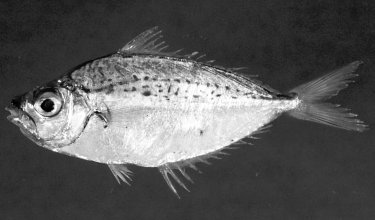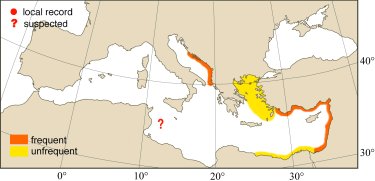
|
Relevant synonyms
Misidentification
Meristic formula
|
|
| photo : David Darom |
|
SHORT
DESCRIPTION
color :
body silvery grey with white belly. Dark spots on the back and the upper flanks.
size :
common 4-8 cm (max. 11 cm). |
DISTINGUISHING CHARACTERISTICS
BIOLOGY / ECOLOGY
habitat :
benthic in continental shelf to 70 m. |
|
1st
MEDITERRANEAN RECORD
|

|
|
DISTRIBUTION
* Note : a single specimen was mentioned by Ben-Tuvia (1966, from a record by Gilat, south-west off Lampedusa); as there is no other report from the Sicily Channel in the last 36 years, the presence of this species is considered doubtful. |
ESTABLISHMENT SUCCESS
speculated reasons for success :
|
|
|
MODE OF
INTRODUCTION |
IMPORTANCE TO
HUMANS |
|
KEY
REFERENCES
|
 Leiognathus klunzingeri
Leiognathus klunzingeri